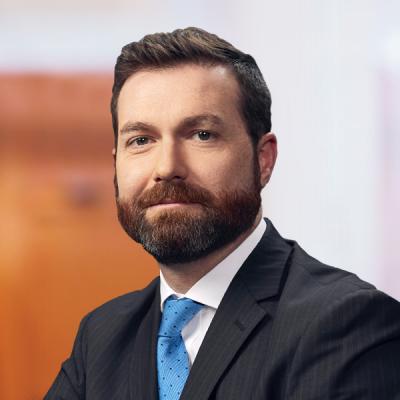What's New in 5G - May 2021
The next-generation of wireless technologies – known as 5G – is here. Not only is it expected to offer network speeds that are up to 100 times faster than 4G LTE and reduce latency to nearly zero, it will allow networks to handle 100 times the number of connected devices, revolutionizing business and consumer connectivity and enabling the “Internet of Things.” Leading policymakers – federal regulators and legislators – are making it a top priority to ensure that the wireless industry has the tools it needs to maintain U.S. leadership in commercial 5G deployments. This blog provides monthly updates on FCC actions and Congressional efforts to win the race to 5G.
Regulatory Actions and Initiatives
Mid-Band Spectrum
- The FCC grants additional Tribal entities’ requests to use spectrum in the 2.5 GHz band for wireless services.
- On April 6, 2021, the FCC released two Orders granting the waiver requests of the Paskenta Band of Nomlaki Indians and the Lower Sioux Indian Community General Council regarding the definition of eligible Tribal lands for purposes of applying for 2.5 GHz band spectrum in the Rural Tribal Priority Window. Grant of the waiver request to the Paskenta Band of Nomlaki Indians will allow it to obtain a license for approximately 58.61 acres of trust lands located directly across from its reservation, known as a rancheria, in Northern California. Grant of the waiver request to the Lower Sioux Indian Community General Council will allow it to obtain a license for small areas of off-reservation trust lands directly adjacent to the Tribe’s reservation in Minnesota.
- Similarly, on April 20, 2021, the FCC released an Order granting the waiver request of the Oglala Sioux Tribe, which will allow the Tribe to provide service on land it owns near Hells Canyon in Falls River County, South Dakota. And it released an Order granting the waiver request of the Campo Band of Mission Indians, which will allow it to provide service for Tribally-owned fee land encompassed within the interior of its reservation in California.
- The FCC also released Public Notice announcing that 50 additional 2.5 GHz Tribal applications have been accepted for filing. The applications accepted for filing are listed in Attachment A to the Public Notice and are sorted by file number. The same applications are included in Attachment B, but are sorted by applicant name. A News Release was concurrently issued, reporting that “[t]o date, the FCC has granted 216 licenses to enable Tribes to access this prime mid-band spectrum, and staff continues to make progress on reviewing additional applications.”
- The FCC rules regarding mid-band spectrum in the 3.45 GHz band, scheduled for auction in October 2021, to become effective.
- The FCC’s September 2020 Order adopting rules to make available an additional 100 megahertz of mid-band spectrum in the 3.45-3.55 GHz band for commercial 5G services was published in the Federal Register on April 7, 2021. That means petitions for reconsideration of those rules and challenges by incumbent secondary users to modifications of their licenses to clear the spectrum must be submitted by May 7, 2021. The FCC’s rules governing the spectrum, which is expected to be auctioned in early October, will otherwise become effective (except for certain rules requiring approval from the Office of Management and Budget) on June 7, 2021.
- The FCC’s September 2020 Order adopting rules to make available an additional 100 megahertz of mid-band spectrum in the 3.45-3.55 GHz band for commercial 5G services was published in the Federal Register on April 7, 2021. That means petitions for reconsideration of those rules and challenges by incumbent secondary users to modifications of their licenses to clear the spectrum must be submitted by May 7, 2021. The FCC’s rules governing the spectrum, which is expected to be auctioned in early October, will otherwise become effective (except for certain rules requiring approval from the Office of Management and Budget) on June 7, 2021.
- The FCC grants additional applications for mid-band spectrum in the 3.5 GHz band, and NTIA provides additional protection criteria for operators using the spectrum in American Samoa.
- On April 30, 2021, the FCC released a Public Notice announcing the grant of an additional 13 applications for licenses in the 3.5 GHz band. The list of applications sorted by licensee is available here, and the list of applications granted by market is available here.
- On April 26, 2021, NTIA, on behalf of the Department of Defense (“DoD”), sent a letter notifying the FCC of the required protection criteria for operations in the 3550-3650 MHz portion of the 3.5 GHz band in American Samoa. The letter notes that operations in that portion of the band were pending a determination as to the type of Dynamic Protection Area (“DPA”) necessary to protect federal incumbents, and DoD has now determined that instead of employing an Environmental Sensing Capability, a scheduling portal will be used, with portal-activated DPAs (or P-DPAs). The NTIA letter is related to an April 2020 Public Notice certifying Federated Wireless as a Spectrum Access System (“SAS”) in American Samoa but only for the 3650-3700 MHz portion of the band (where there are no federal incumbents).
- The FCC announces the acceptance of applications for the largest amount of mid-band spectrum made available yet for 5G services and opens a docket for transition disputes.
- On April 2, 2021, the FCC announced that it accepted for filing 21 applications for spectrum in the 3.7-3.98 GHz band (“C-band”). Bidding for that spectrum – the FCC’s largest auction of mid-band spectrum – concluded on February 17, 2021 and resulted in 21 winning bidders winning a total of 5,684 licenses. A list of the applications sorted by applicant is available here, and a list of applications sorted by market is available here. Petitions to deny the applications were due April 12, 2021, oppositions to those petitions were due April 19, 2021, and replies were due April 26, 2021.
- On April 16, 2021, the FCC released a Public Notice announcing that it has opened a new docket for RSM US LLP (“RSM”) – which was selected to serve as the Relocation Coordinator for the transition of the C-band from satellite to commercial wireless services – to provide notices of disputes involving “the comparability of facilities, workmanship, and preservation of service” related to the C-band transition. RSM is required to include in those notices its recommendations for resolution and any related information provided by the disputants, and it must submit those notices no later than 10 business days after RSM receives formal notice of the dispute.
- Deadlines for additional public input on modernizing the 5.9 GHz band for unlicensed services like Wi-Fi, as well as for automotive applications, are established.
- The FCC’s Order and Further Notice adopted on November 20, 2020 to repurpose the lower 45 megahertz of the 5.9 GHz band (5.850-5.895 GHz) for unlicensed use and require the Intelligent Transportation System radio service to use cellular vehicle-to-everything-based technology in the upper 30 megahertz of the band (5.895-5.925 GHz) was published in the Federal Register on May 3, 2021. The rules will become effective July 2, 2021, except for the rule requiring existing Dedicated Short-Range Communications licensees to notify the FCC by the transition deadline (July 5, 2022) that they have ceased operating in the 5.850-5.895 GHz port of the band. The FCC will separately announce when that rule becomes effective. In addition, comments and replies on the Further Notice are due June 2, 2021 and July 2, 2021, respectively.
High-Band Spectrum
- Parties ask the FCC to further delay action on its evaluation of spectrum in the 12 GHz band for commercial wireless services.
- On April 27, 2021, OneWeb, Kepler, SpaceX, Intelsat, and SES submitted a request for extension of time to submit comments on the FCC’s open proceeding evaluating whether the 12.2-12.7 GHz (“12 GHz”) band, which is currently used for broadcasting and satellite services, can be used for terrestrial mobile services. As we recently reported, the FCC already granted a previous request for extension, making comments and reply comments due May 7, 2021 and June 7, 2021, respectively. The parties seek a further extension until RS Access, LLC produces in the record a technical analysis that it purports will establish the feasibility of sharing between broadcast licensees and satellite operations.
- In a separate but related decision released the same day, the FCC granted an application filed by SpaceX to modify its network constellation, which operates in, among others, the 12 GHz band. The FCC’s grant will allow SpaceX to decrease the number of its satellites and to lower the altitude for a portion of the satellites in order to provide a high-speed, low-latency broadband service to underserved and unserved areas of the U.S. and around the world. The FCC expressly conditioned SpaceX’s grant subject to the outcome of the 12 GHz proceeding and noted that “SpaceX proceeds at its own risk.”
- The FCC seeks comment on emissions limits in the 24.25-27.5 GHz band, which was previously made available for commercial wireless services.
- The FCC’s Office of Engineering and Technology and Wireless Telecommunications Bureau released a Public Notice on April 26, 2021 seeking comment on emissions limits in the 24.25-27.5 GHz band, which was previously auctioned for commercial mobile operations, into the adjacent 23.6-24.0 GHz band, which is used for passive sensing operations (e.g., weather forecasting), and implementing certain decisions from the 2019 World Radiocommunication Conference regarding those emissions limits. Comments and reply comments are due 30 days and 60 days, respectively, after Federal Register publication.
5G Networks and Infrastructure
- The FCC conducts a workshop on securing the Nation’s communications supply chain.
- The FCC held a workshop with the National Counterintelligence and Security Center on April 26, 2021 regarding efforts to secure the Nation’s communications supply chain. The day-long workshop featured panels that explored initiatives to promote the supply chain integrity of small- and medium-sized businesses and efforts to protect the software supply chain. The agenda and panelists for the workshop are available here.
- In Acting FCC Chairwoman Rosenworcel’s remarks for the workshop, she noted that “[a]t the FCC, under my leadership, we are pursuing a proactive, three-pronged strategy to building a more secure, resilient, and next-generation communications supply chain for this 5G future.” That strategy includes slowing down untrusted vendors, speeding up trustworthy innovation, and collaborating with government, industry, and partner nations. Both FCC Commissioners Starks and Simington released their own statements.
- Subsequently, on April 28, 2021, the FCC released a Public Notice announcing that it selected Ernst & Young as the Fund Administrator for the $1.9 billion Secure and Trusted Communications Networks Reimbursement Program. According to the Public Notice, “Ernst & Young will manage the Reimbursement Program and among other duties will be responsible for reviewing requests submitted by Reimbursement Program participants and providing recommendations on funding decisions to the Bureau.”
- The FCC announces the effective date of FCC radiofrequency exposure limits.
- The FCC released a Public Notice announcing that certain modifications it adopted in 2019 to its rules providing limits on human exposure to radiofrequency (“RF”) energy emitted from FCC-regulated transmitters and facilities became effective on May 3, 2021 for new facilities as well as transmitters that are modified in a way that affects RF exposure. All other existing facilities will have a two-year period (i.e., until May 3, 2023) to come into compliance. The exposure limits themselves were not modified, but the way they are measured, among other things, was modified to ensure the health and safety of workers and consumers of wireless technology.
Legislative Efforts
- Senators Urge President Biden to allocate funding for Open Radio Access Networks.
- Members of the Senate Intelligence Committee wrote a letter to President Biden, urging his administration to allocate $3 billion in its pending budget request for Fiscal Year 2022 for the development and deployment of Open Radio Access Network (Open RAN) technology to counter the risk posed by foreign-made 5G network components. The Senators argued that the funding will enable the U.S. and its allies “to adopt Open Radio Access Network (Open RAN) equipment at a scale necessary to compete with the equipment vendors of our strategic rivals, including China.”
- Members of the Senate Intelligence Committee wrote a letter to President Biden, urging his administration to allocate $3 billion in its pending budget request for Fiscal Year 2022 for the development and deployment of Open Radio Access Network (Open RAN) technology to counter the risk posed by foreign-made 5G network components. The Senators argued that the funding will enable the U.S. and its allies “to adopt Open Radio Access Network (Open RAN) equipment at a scale necessary to compete with the equipment vendors of our strategic rivals, including China.”
- The Senate reintroduces a bill that would direct the FCC to establish a new opportunity for Tribal entities to obtain 2.5 GHz spectrum.
- Senator Warren reintroduced the Extending Tribal Broadband Priority Act of 2021 on April 26, 2021. The bill would require the FCC to open a new Tribal Priority Window for the 2.5 GHz band within 30 days of enactment to allow Tribes additional time to apply for available spectrum in the band. The window, which would be established under the same terms and conditions as the initial Tribal Priority Window, would remain open for 180 days. The FCC had earlier opened a window for Tribal entities to apply for 2.5 GHz licenses (see above), but that window closed on September 2, 2020. The bill is now in committee.
- Senator Warren reintroduced the Extending Tribal Broadband Priority Act of 2021 on April 26, 2021. The bill would require the FCC to open a new Tribal Priority Window for the 2.5 GHz band within 30 days of enactment to allow Tribes additional time to apply for available spectrum in the band. The window, which would be established under the same terms and conditions as the initial Tribal Priority Window, would remain open for 180 days. The FCC had earlier opened a window for Tribal entities to apply for 2.5 GHz licenses (see above), but that window closed on September 2, 2020. The bill is now in committee.
- The Senate introduces a bill that would require the FCC and NTIA to update the Memorandum of Understanding on Spectrum Coordination.
- Senator Wicker introduced the Improving Spectrum Coordination Act of 2021, which would, among other things, require the FCC and NTIA to revise the Memorandum of Understanding on Spectrum Coordination to include processes for addressing policy differences between the two agencies, require the agencies to update the Memorandum every four years, and clarify NTIA’s role as federal agencies’ representative before the FCC. The bill is now in committee.

What's New in 5G - April 2021
April 2, 2021| Blog

What's New in 5G - March 2021
March 2, 2021| Blog






